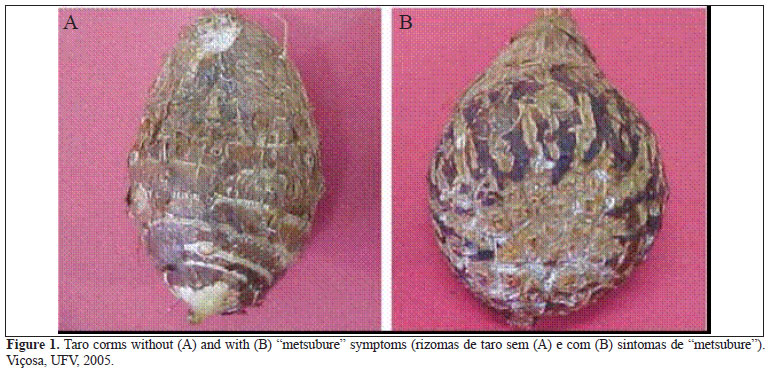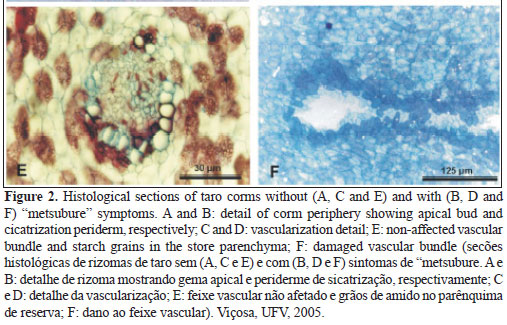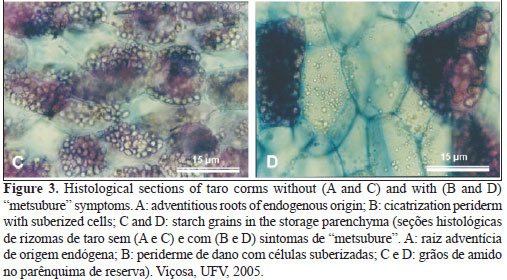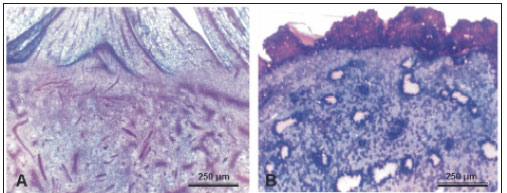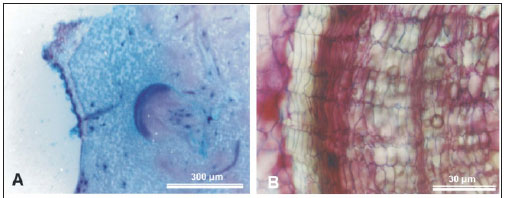Taro plants present high Ca absorption. There is evidence that the disorder "metsubure" is of nutritional origin being attributed to calcium deficiency. The metsubure is characterized by the corm apical bud suppression and a smooth lesion in the apex. This disorder reduces the taro corms value as food and hinders their utilization as a propagative material in commercial fields. In subterranean structures, Ca deficiency is believed to be more harmful to the vascular tissue cells since they have thicker walls than other tissue cells. Thus, this work aimed to characterize the anatomical changes in taro corms (Colocasia esculenta), cv. Chinese (BGH 5928) with "metsubure" symptoms. For this, corms with and without this symptom were obtained from plants grown in a greenhouse, in pots, containing soil. Corms presenting "metsubure" showed anatomical changes with damage in the vascular system which led to the suppression of apical bud formation, with detection of a wound periderm. In these corms, the periderm was thicker with compact and suberized cell layers; moreover parenchyma cells were larger with less starch accumulation as compared to corms without "metsubure" symptoms.
Colocasia esculenta; mineral nutrition; physiological disorder; eddoe

